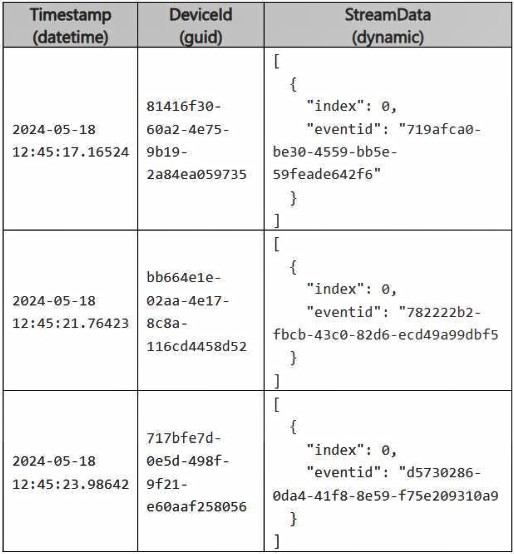You have a Fabric workspace that contains an eventhouse and a KQL database named Database1. Database1 has the following:
A table named Table1
A table named Table2
An update policy named Policy1
Policy1 sends data from Table1 to Table2.
The following is a sample of the data in Table2.

Recently, the following actions were performed on Table1:
An additional element named temperature was added to the StreamData column.
The data type of the Timestamp column was changed to date.
The data type of the DeviceId column was changed to string.
You plan to load additional records to Table2.
Which two records will load from Table1 to Table2? Each correct answer presents a complete solution.
NOTE: Each correct selection is worth one point.
A)

B)

C)

D)

Show Answer
Hide Answer
Correct Answer:
B, D
Changes to Table1 Structure:
StreamData column: An additional temperature element was added.
Timestamp column: Data type changed from datetime to date.
DeviceId column: Data type changed from guid to string.
Impact of Changes:
Only records that comply with Table2's structure will load.
Records that deviate from Table2's column data types or structure will be rejected.
Record B:
Timestamp: Matches Table2 (datetime format).
DeviceId: Matches Table2 (guid format).
StreamData: Contains only the index and eventid, which matches Table2.
Accepted because it fully matches Table2's structure and data types.
Record D:
Timestamp: Matches Table2 (datetime format).
DeviceId: Matches Table2 (guid format).
StreamData: Matches Table2's structure.
Accepted because it fully matches Table2's structure and data types.






